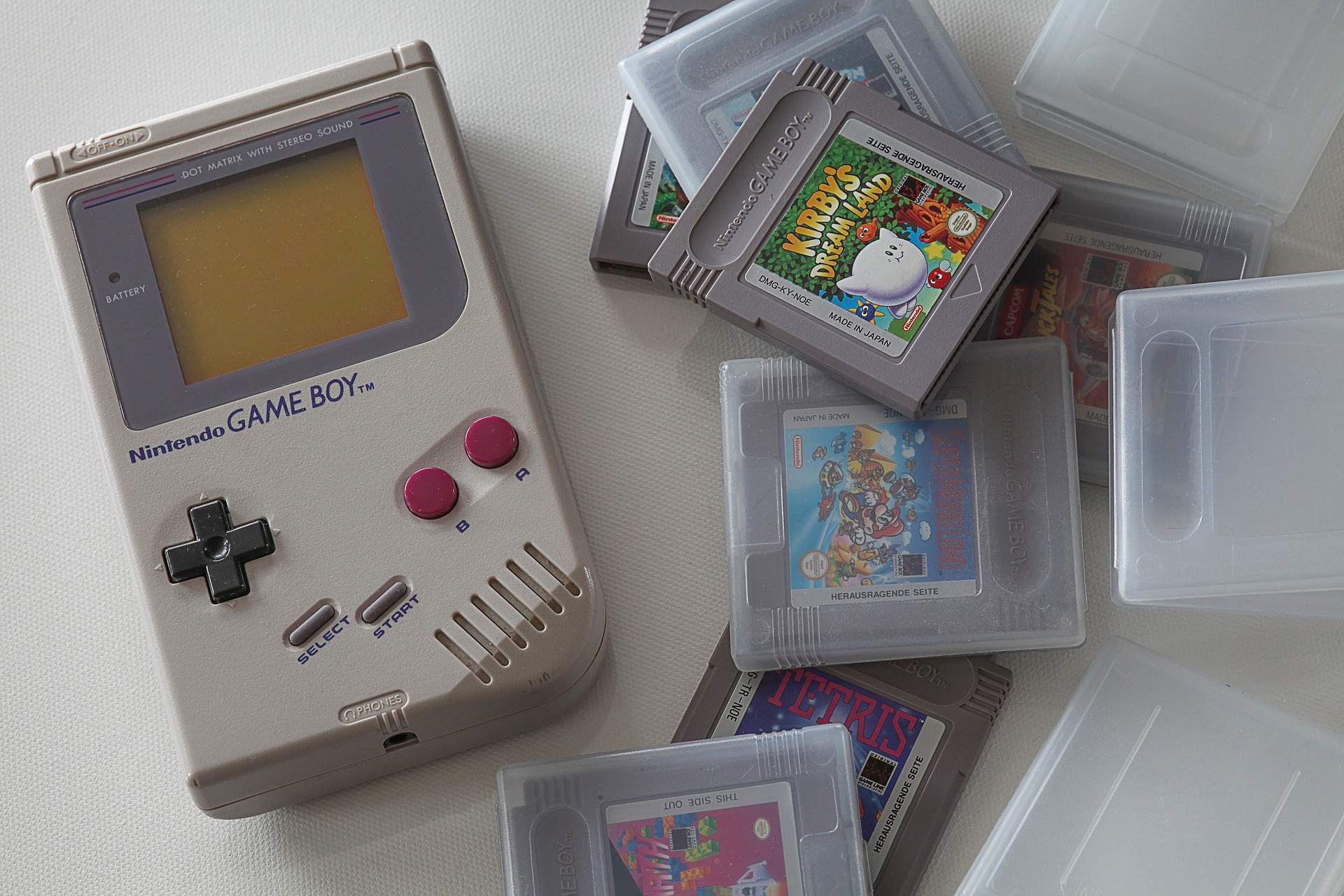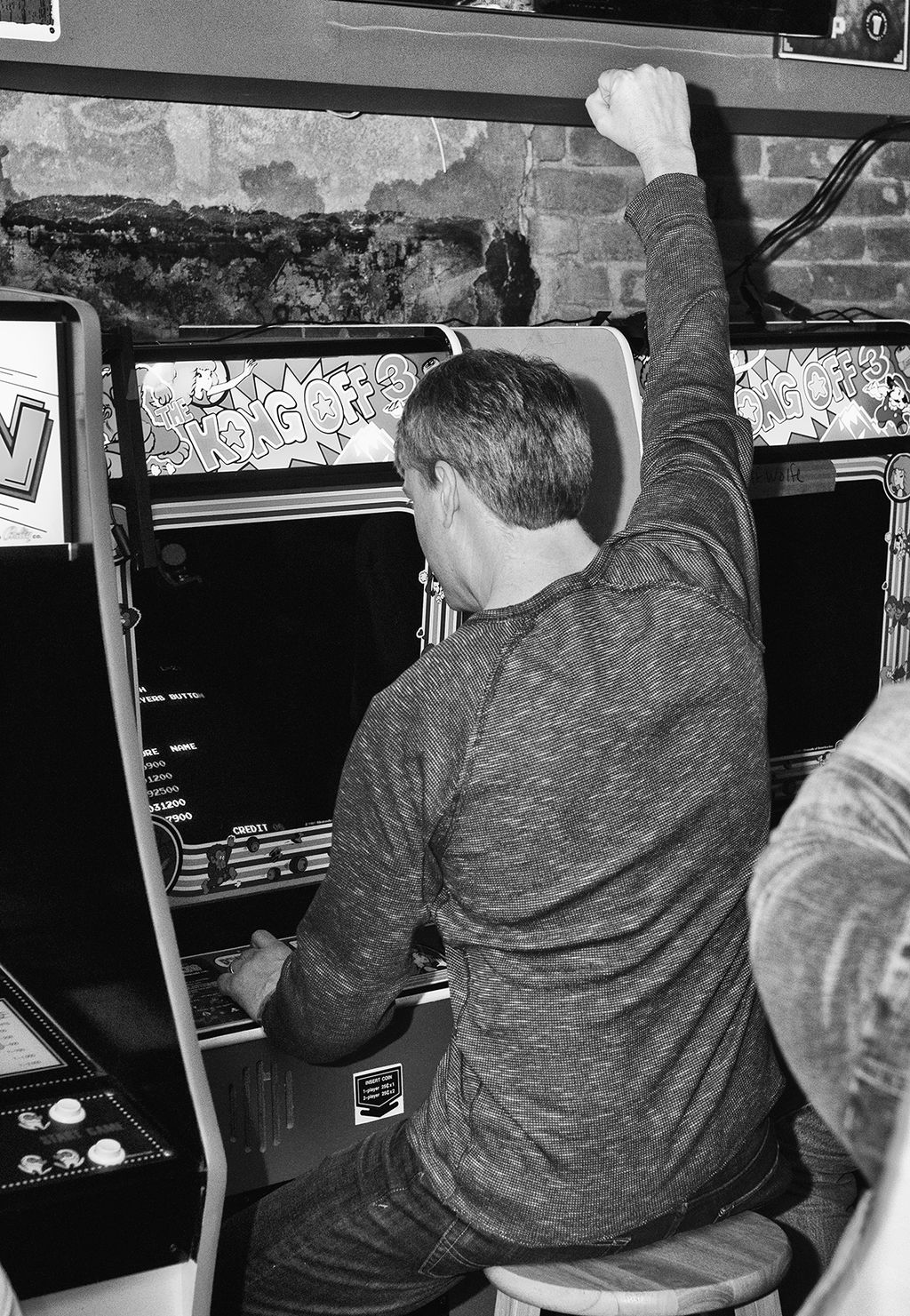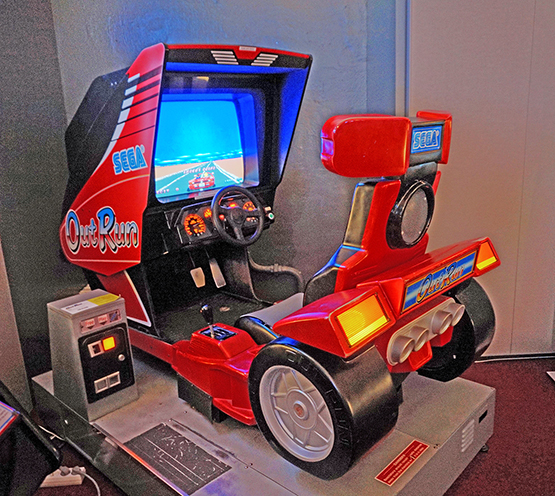The 70s was a groundbreaking decade for video games. Early cabinets of Pong and Breakout were the harbingers of Space Invaders, the 1978 game that changed everything. But if the 70s was where it all began, the 80s was the decade where franchises were born and game designers took the industry to new heights. It was such a period of change that it’s tough to come up with a definitive top 10. You’ll probably disagree with ours. And that’s fine. We could easily have come up with a list of the top 50 games of the 80s and we’d still miss a couple of your favourites. But all 10 of these games are undisputed classics.
1. Tetris (1984)
This tile-matching puzzler is possibly the most addictive game ever created, but the story behind it is even more fantastic. Tetris was created by a young computer engineer called Alexey Pajitnov, who worked in the Academy of Science in Moscow on a hulking Elektronika 60 computer. The machine had no graphics so the original version used text characters to make the blocks. Pajitnov quickly realised he was onto something big and enlisted Dmitry Pavlovsky and Vadim Gerasimov to help develop the game. Legal battles followed with companies around the world desperate to get their hands on the game, and Pajitnov himself didn’t get any royalties until he got the rights back from the Soviet government in 1996. The biggest beneficiary was Nintendo and the 1989 Game Boy version made their handheld a huge success as everyone, everywhere, tried to make order from tetromino chaos.


The Nintendo Game Boy was home to many of the ’80s best games, including Tetris
2. Donkey Kong (1981)
Donkey Kong might not have been the first single-screen platform game but it was easily the best, and included more strategy than a Super High Roller poker tournament. It was also the breakthrough game for Shigeru Miyamoto, the famed developer behind some of the biggest franchises of all time, such as Mario, Zelda and Star Fox. This was Mario’s first outing but he was far from super at this point. All he could do was jump… Over barrels, fireballs and across gaps through four fiendish screens. In fact in the original he was simply called Jumpman before his newfound fame convinced Nintendo to give him a narrative. Jumpman or Mario wasn’t even supposed to be though. Early designs of the game were for a license of Popeye but when that fell through it was repackaged as Donkey Kong.


Two-time Donkey Kong world champion Steve Wiebe celebrates getting a high score on the classic arcade game. Credit: Commons: wikimedia. Author: Datagod
3. Super Mario Bros 3 (1989)
Mario moved from Donkey Kong and its sequels to being the star of the show in the 1983 arcade game Mario Bros. But he became a bona fide superstar in the 1985 NES game Super Mario Bros. Shigeru Miyamoto had one more trick up his sleeve in the 80s though, when NES game Super Mario Bros 3 blew away everything that had gone before. It was released in Japan in 1988 but the US didn’t get to play it until 1990 when it was rightly acclaimed as one of the best games of all time. The incredible thing is how well it stacks up today.


Everyone’s favourite plumber was originally called Jumpman
4. Ms Pac-Man
Pac-Man is the most iconic of all video game characters and has made the leap through the screen with toys, clothes, books, cartoons, food products and a starring role in the movie Pixels. In a world of mostly violent video games, designer Toru Iwatani wanted to attract another audience into the arcades, saying at the Game Developers Conference in San Francisco, “The reason I created Pac-Man was because we wanted to attract female gamers. Back then, there were no home games. People had to go to the arcade to play games. That was a playground for boys.” The first proper sequel Ms. Pac-Man is even better, with the same dots and four ghosts (Blinky, Pinky, Inky and Sue), but with moving fruit bonuses and four different mazes. It was also the first game with a female lead character.
5. Defender (1981)
Probably the most technologically advanced game at the time, Defender was fast and chaotic, with crisp sound and brilliant vector graphics. You had to save humanity from waves of alien attacks, catching abducted humanoids and taking them back to safety. But it was the control system that stumped most people. The two-way joystick only controlled your height, with thrust and reverse buttons moving you laterally. And that was enough to ensure that most players only lasted a few seconds before backing off from the cabinet shaking their heads.
6. The Legend of Zelda (1986)
Shigeru Miyamoto – yes, him again – is also the brainchild behind the massive Zelda series, which is still going as strong as ever today. The latest Zelda game, Breath of the Wild, was the best game of 2017 for a lot of people, and it all started here with Link’s first outing. It’s a top-down adventure, with the green-clad hero acting as the ‘Link’ between you and the fantasy world containing eight dungeons. You started off with a sword handed to you by an old man with the immortal words, “It’s dangerous to go alone. Take this.” What followed was a non-linear delight that took in puzzles, battles and exploration, woven together with a compelling narrative.
7. R-Type (1987)
The sideways shooter that almost every game in the genre referenced afterwards, R-Type was innovative but oh so very tough. The power-ups were insanely satisfying, including heat-seeking missiles, lasers that cannoned off the walls and The Force, an indestructible orange orb that you could attach to the front or rear of your ship, or shoot off to fire independently in hard to reach places. Brilliant level design, huge end of level bosses and the feeling that if you just had one more go you’d be able to do it (spoiler: you probably couldn’t) made this the standout arcade game of 1987.
8. Sim City (1989)
Games in the 80s were all about winning and losing, getting high scores and trying to beat the machine. With a few exceptions. Chief among them was a game that almost didn’t get to see the light of day but eventually went on to create one of the biggest-selling franchises and spin-off franchises (The Sims) of all time. Will Wright was the developer of the original and he hawked his 1985 Micropolis game around all the major publishing houses at the time – and they all thought he was mad. Who would want to play a game that was effectively a blank canvas, where you had to design a city, and where there were no set goals or right and wrong way of playing it? How wrong they were, as they found out when Maxis agreed to publish it in 1989.
9. Tempest (1981)
Created by David Theurer of Missile Command fame, Tempest was a cult hit that’s been recognized over time as one of the best, as well as one of the hardest, games of the 80s. The unfamiliar control system and the abstract vector graphics did for most people – it’s just not immediately obvious what you were supposed to do. Which is, control a claw-shaped ship that moves around the surface of a series of 3D wireframe webs, clearing them of approaching aliens. Jeff Minter created two authorised sequels, Tempest 2000 (1994) and 3000 (2000), and two spin-offs Space Giraffe (2007) and TxK (2014) which landed him in legal trouble. The game also plays a guest role in Ernest Clien’s book Ready Player One, soon to be the new Steven Spielberg film, when Parzival has to beat a high score of 728,329 on a Tempest cabinet.
10. Out Run (1986)
There weren’t many great driving games in the 80s but Out Run was the first of a new breed – frighteningly fast, thanks to Sega’s own sprite-based 3D graphics hardware (also seen in Space Harrier and After Burner) and complete with a sit-in cabinet with a force feedback steering wheel and accelerate/brake pedals. It was you (and your attractive female companion – hey, this was the 80s!) in a Ferrari Tesatrossa against the clock, and as well as choosing your own soundtrack you could plot your own route through to the goal with five different endings. Out Run might be Out Dated now but it was a hugely important game at the time.


Arcade games don’t get cooler than this. Credit: Commons: wikimedia. Author: Tiia Monto
Bubbling under
There are too many incredible games from the 80s to limit ourselves to just 10. These are the games that possibly should have made the list, but didn’t.
Contra (1987)
Also distributed as Gryzor, Contra defined 80s gaming for lots of people. The Konami classic was the ultimate run-and-gun arcade experience, with a brilliant two-player co-op mode.
Scramble (1981)
‘How far can you invade our Scramble system?’ An all-time arcade classic, Scramble was a brilliant sideways scrolling shooter, with five distinct levels but no time to pause for breath between them.
Dragon’s Lair (1983)
A real oddity but Dragon’s Lair had a huge wow factor with its LaserDisc cartoon graphics that gave kids in the early 80s a glimpse of the future. Shame about the gameplay.
Elite (1984)
First released on the BBC and then ported to almost every home machine, the space-trading classic used wireframe 3D graphics to propel you into a new world. Has influenced more games than you’ve ever played.
Final Fantasy (1987)
There might not have been much new in the way of gameplay in Hironobu Sakaguchi’s Final Fantasy but the storytelling was something else and the series has now sold over 130 million games.







